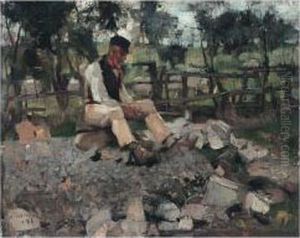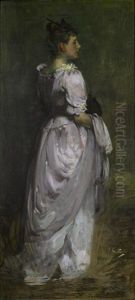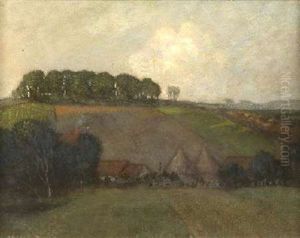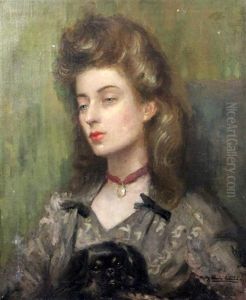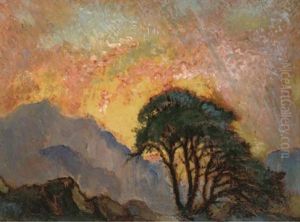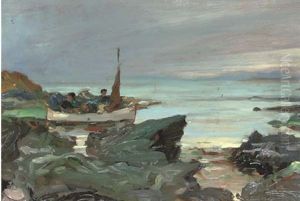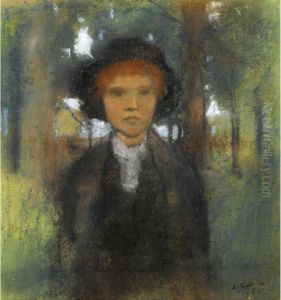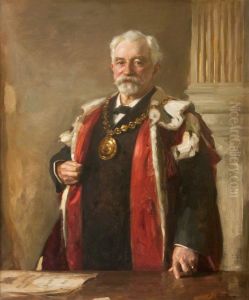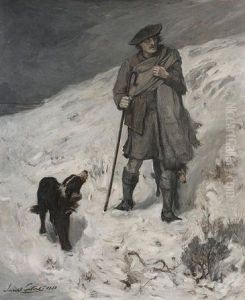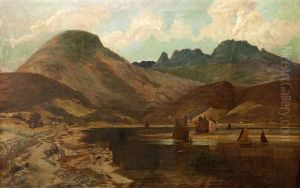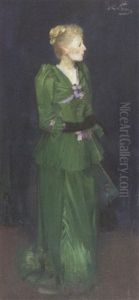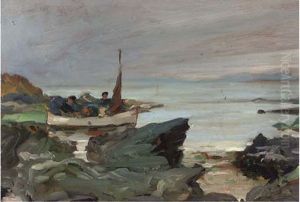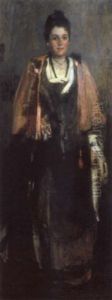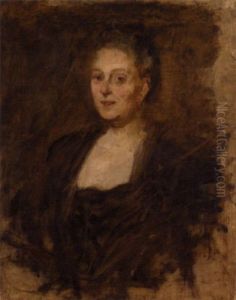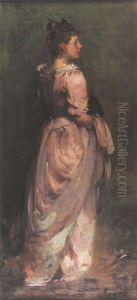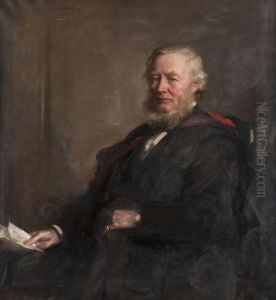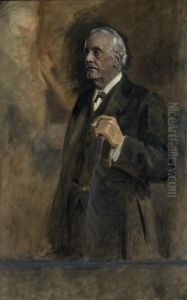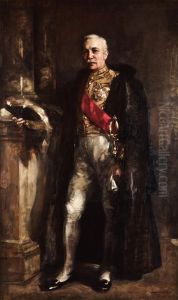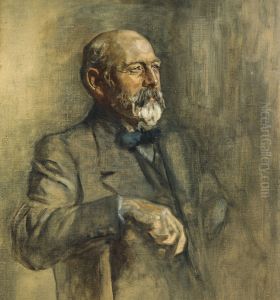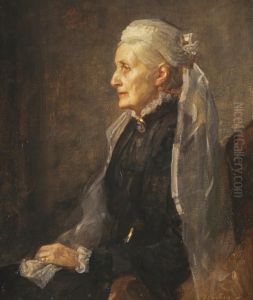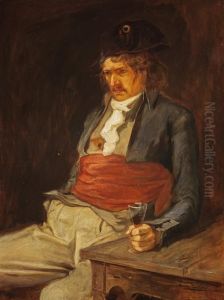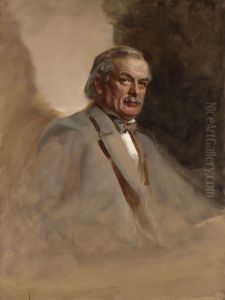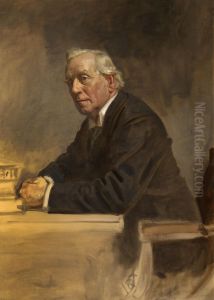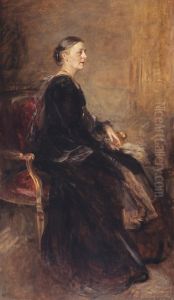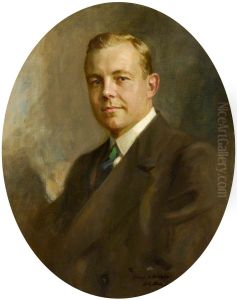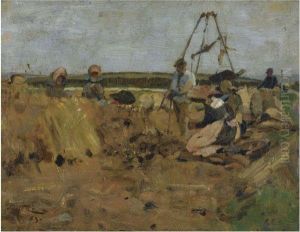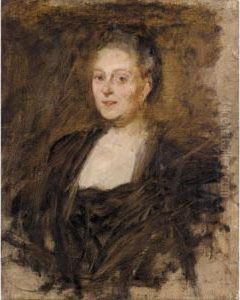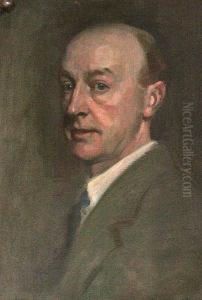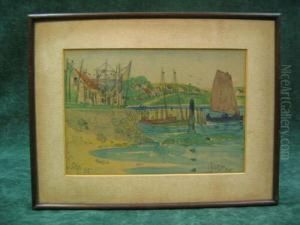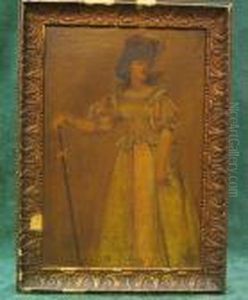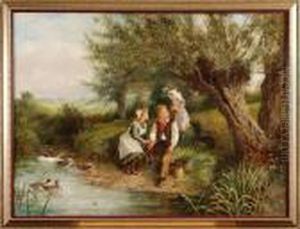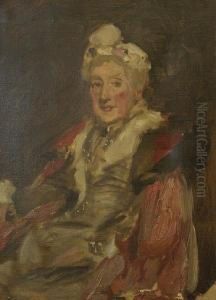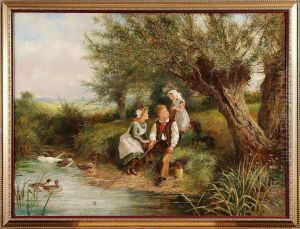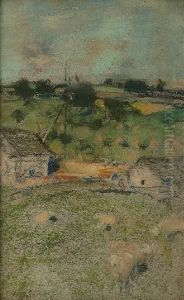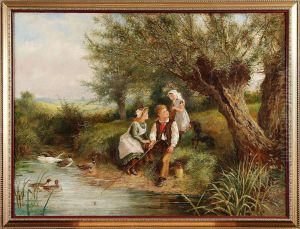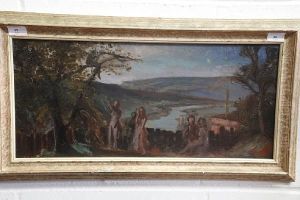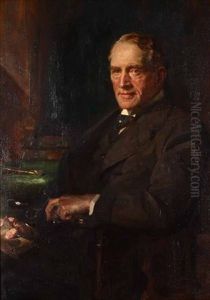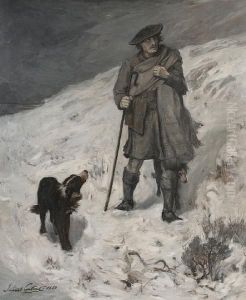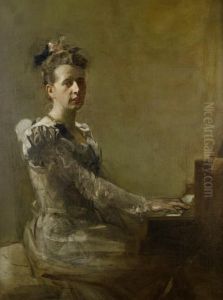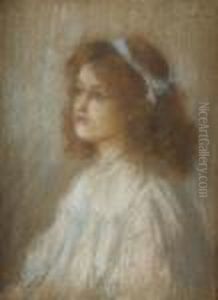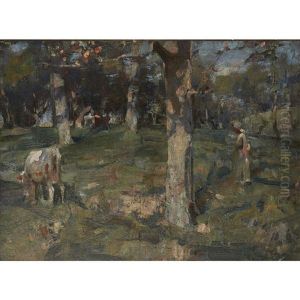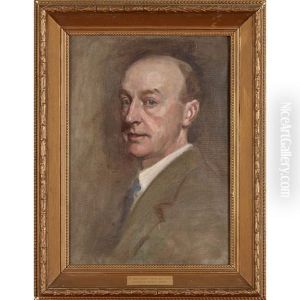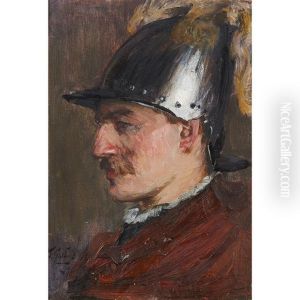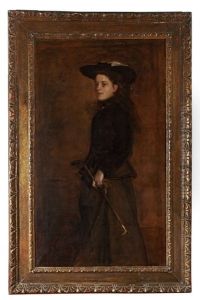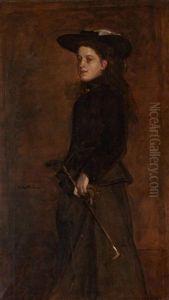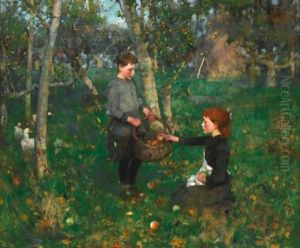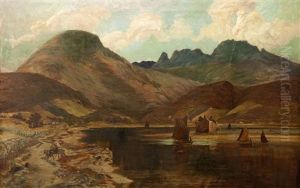James Guthrie Paintings
James Guthrie was a prominent Scottish painter, born on June 10, 1859, in Greenock, Scotland. He is often associated with the Glasgow Boys, a group of artists who were influenced by the realism and naturalism movements in the late 19th century. Guthrie's early education was in law, but he soon shifted his focus towards art, studying at the Glasgow School of Art and later in Paris. This exposure to French art and Impressionism had a profound impact on his work, leading him to adopt a lighter palette and a looser brushwork that was quite distinct from the traditional Scottish art of his time.
Guthrie's early works were characterized by his interest in social realism, depicting the everyday lives of rural Scots. One of his most famous paintings from this period is 'A Hind’s Daughter' (1883), which showcases his ability to capture the subtleties of rural Scottish life with sensitivity and a touch of realism. His subjects often included children and the elderly, portrayed in natural settings, which highlighted his skill in using light and shadow to evoke mood and atmosphere.
As Guthrie's style evolved, he became more interested in portraiture, becoming one of Scotland's foremost portrait painters. His portraits are known for their psychological depth and the ability to capture the personality of his subjects. Notable among these is his portrait of Thomas Carlyle, which is considered one of his masterpieces. Guthrie's approach to portraiture influenced the next generation of Scottish painters, bridging the gap between the Victorian era and modern Scottish art.
Besides his painting, Guthrie also played a significant role in the Scottish art scene as an art educator and critic. He was a vocal advocate for the establishment of a national gallery of modern art in Scotland. In 1902, Guthrie was appointed as the president of the Royal Scottish Academy, a position he held until his death in 1930. During his tenure, he worked tirelessly to promote Scottish art and artists, contributing significantly to the development of a distinct Scottish identity in art.
James Guthrie passed away on September 6, 1930, leaving behind a legacy that had a lasting impact on Scottish art. His work is celebrated for its contribution to the Glasgow Boys movement and for laying the groundwork for modern Scottish painting. Guthrie's paintings are held in high regard and can be found in major art collections and museums across Scotland and beyond.
